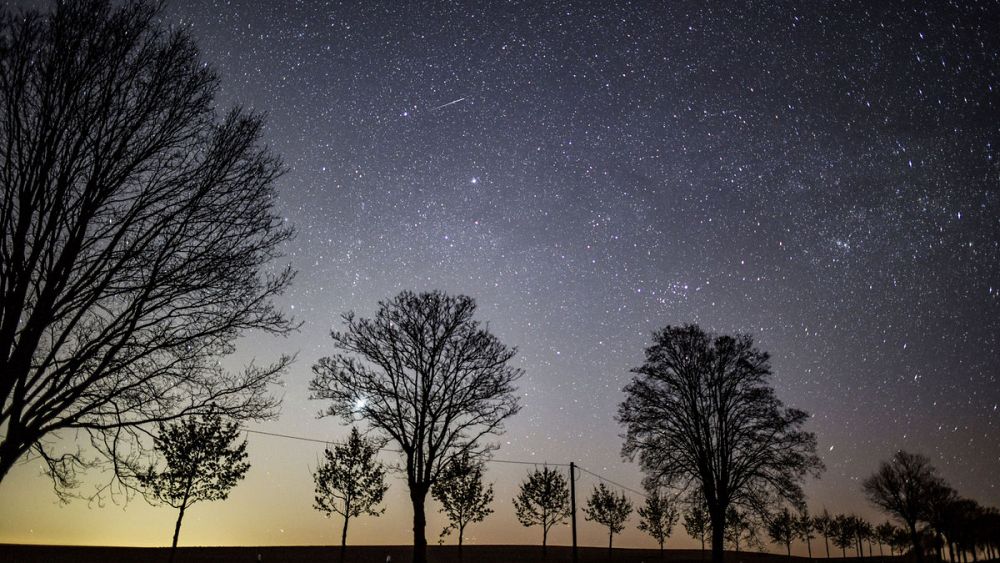
If after several weeks under lockdown you've exhausted the books in your library and the content in your Netflix queue, the sky has now stepped it to entertain you.
On Tuesday evening, and like every year in late April, our planet will cross the path of comet C / 1861 G1 Thatcher.
Their meeting will see the night sky fill with up to 20 shooting stars per hour.
The annual phenomenon is known as the Lyrids and is, according to NASA, "one of the oldest known meteor showers".
The Lyrids have been observed for 2,700 years and take their name from the constellation Lyra as they appear to radiate out from the Vega, its brightest star.
The meteor shower is best viewed in the Northern Hemisphere and requires nothing but a pair of eyes to view them.
Capricious weather over parts of Europe, however, risk spoiling this celestial ballet for some.
https://news.google.com/__i/rss/rd/articles/CBMifmh0dHBzOi8vd3d3LmV1cm9uZXdzLmNvbS8yMDIwLzA0LzIxL2x5cmlkcy1tZXRlb3Itc2hvd2VyLW5pZ2h0LXNreS1zZXQtdG8tZmlsbC11cC13aXRoLXNob290aW5nLXN0YXJzLWFzLWVhcnRoLWNyb3NzZXMtcGF0aC1vZtIBggFodHRwczovL3d3dy5ldXJvbmV3cy5jb20vYW1wLzIwMjAvMDQvMjEvbHlyaWRzLW1ldGVvci1zaG93ZXItbmlnaHQtc2t5LXNldC10by1maWxsLXVwLXdpdGgtc2hvb3Rpbmctc3RhcnMtYXMtZWFydGgtY3Jvc3Nlcy1wYXRoLW9m?oc=5
2020-04-21 13:27:31Z
52780726926053
Tidak ada komentar:
Posting Komentar